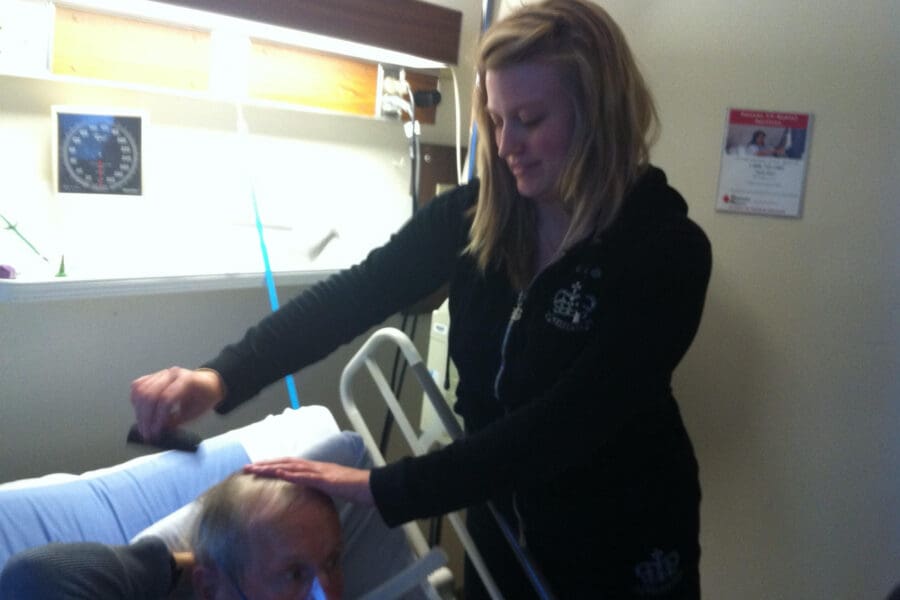Navigating through the various stages of grief is a journey that looks different for everyone.
This guide will provide you with further insight into what to expect during the stages of grief, how long grief can last, and how to seek support so that you can move forward and enjoy life again.
Key Takeaways
- Grief is not a linear process.
- Not everyone will experience all stages of grief.
- Denial is a natural response to emotional pain.
- Acceptance of grief reflects the start of a new chapter of life.
What is grief?
Grief is a complex response to losing someone or something you loved. It often involves a range of feelings from sadness to numbness and happens in stages.
These stages include denial, anger, bargaining, depression, and acceptance and happen in no particular order.
Understanding grief and its stages can provide insight into what to expect during the healing process, but first let’s start by exploring the common symptoms of grief.
What are the signs and symptoms of grief?
Grief symptoms can show up in many different ways and there is no “right” way to grieve.
Physically, you might feel exhausted, have sleep disturbances, or notice appetite changes like eating too much or too little.
Emotional symptoms range from person to person and may include intense feelings of sadness, anger, guilt, or anxiety.
It is also common for people to report having difficulty concentrating or frequent moments of confusion and disbelief.
How long does grief last?
A question you may be wondering is “how long will my grief last?”. The short answer is: there is no set amount of time.
The emotions you feel can also resurface during anniversaries, special events and holidays, known as grief triggers. These situations are a normal part of the grieving process.
And this is because grieving is a highly personal process. Some people find that their most intense emotions begin to decrease within a few weeks or months. For others, the grieving process can last several months or years.
It is important to understand that there is no “standard” grieving period, but practicing self-compassion can help you along as you process your grief.
What are the stages of grief?
There are five main stages of grief. A common misconception is that the stages happen step by step with people moving from one stage to the next in a straight line. In reality, the stages of grief do not happen in any particular order.
You may even find yourself revisiting a stage more than once. This is a perfectly natural response to grief, so don’t worry if your experience through the stages looks different from someone else’s.
1. Denial
For many, the initial stage of grief and loss begins with denial. It is our minds’ way of trying to protect us. During this stage you may feel like you are in shock. You may have thoughts that there must have been a mistake and find it hard to believe that your loved one has passed.
2. Anger
Anger is a natural part of the grieving process. During this stage anger can be expressed both internally and externally and the intensity of it can catch you off guard.
You might find yourself lashing out at loved ones, getting irritated over minor inconveniences, or feeling angry at the person who has passed.
All of the different expressions of anger during this stage are natural reactions to grief, so remember to be patient and give yourself grace.
3. Bargaining
When we are confronted with pain, our natural reaction is to want to control or change the situation. Grief is no different.
If you find that “if only” and “what if” scenarios are taking over your thoughts, you may be in the bargaining stage.
During this stage it is also common to feel guilt or shame. These feelings of guilt are often our way of trying to find meaning and regain some sense of control over our loss.
4. Depression
This stage can often include a deep sense of emptiness or sadness as the weight of the loss sinks in.
Although difficult, this stage actually reflects the beginning of acceptance. It is where you start processing your loss on a deeper level.
Unlike clinical depression, these feelings of intense sadness or emotional numbing are a direct response to loss and are a normal part of the grieving process.
5. Acceptance
Acceptance is often misunderstood to be the stage where grief is “over”. However, acceptance simply represents an adjustment period to what many call a “new normal” after a period of loss.
During this stage you may gradually return to daily activities or social interactions that you had enjoyed before. You may even be experiencing moments of joy or planning for the future for the first time in a long time.
For many, reaching this stage is a significant step in the healing process. Acceptance symbolizes a way to carry our grief forward in a way that cherishes the loss we have felt.
When to seek help
If you find yourself struggling to move through any of these stages, it might be time to seek help. A licensed mental health professional can help you process your grief and learn coping strategies that can help you through a period of grief.
Seeking support is especially helpful if you notice that your grief interferes with your ability to function fully in your daily life. Grief can impact your work or school performance, relationships, and physical health. If this sounds like you, don’t hesitate to reach out.

Summer West
I’ve experienced grief personally and know how difficult it can be to carry alone. Joining the Embrace Your Grief project is my way of giving back by destigmatizing grief and shedding light on topics that often go unspoken. I want to help create a safe space where people can feel comfortable being themselves and sharing their stories.





Leave a Comment